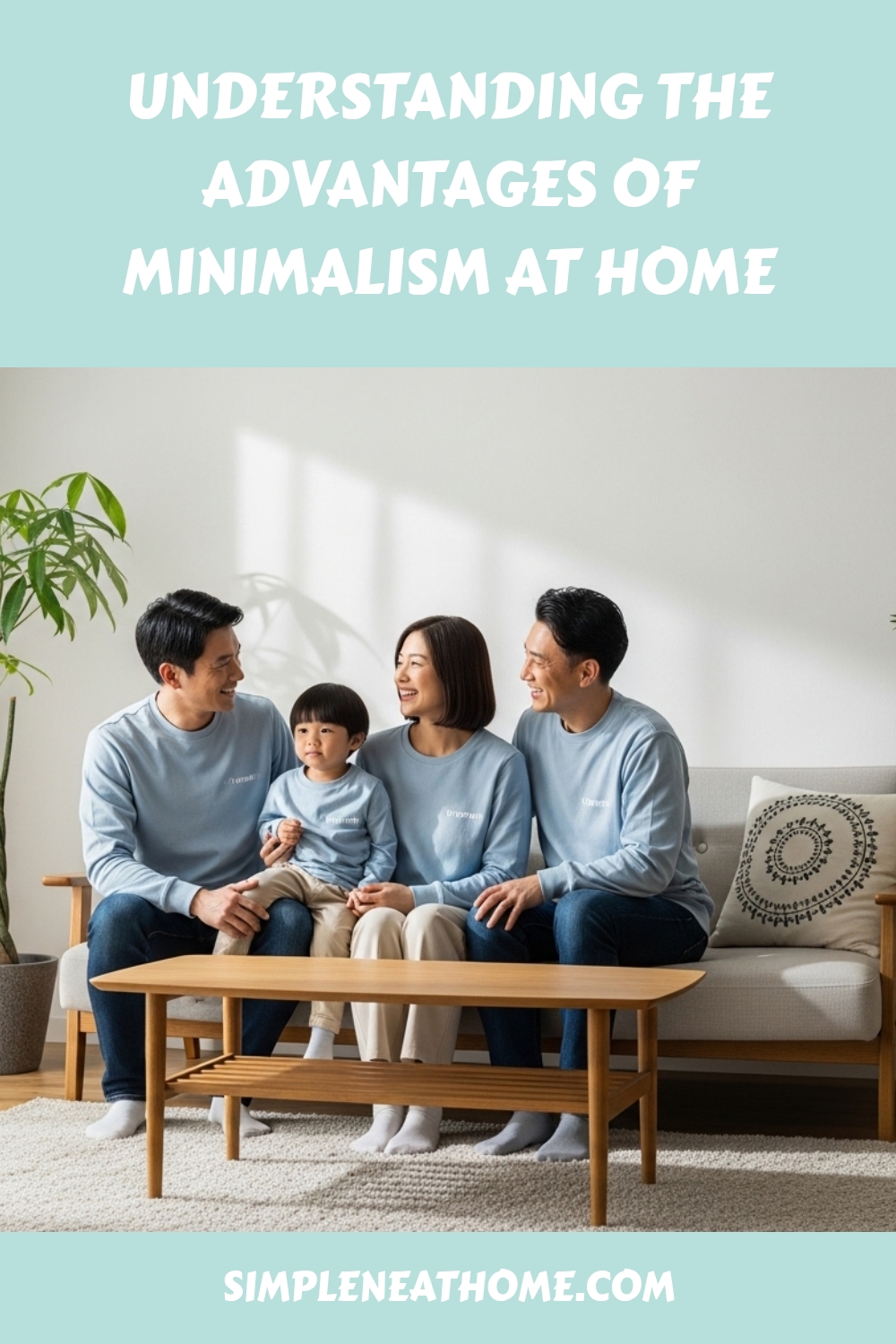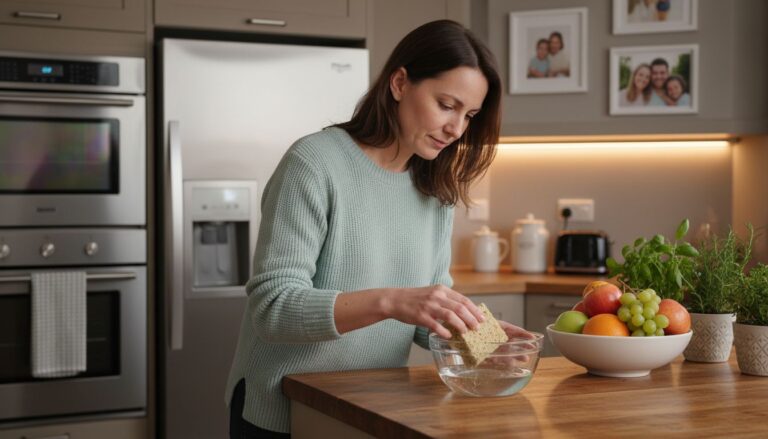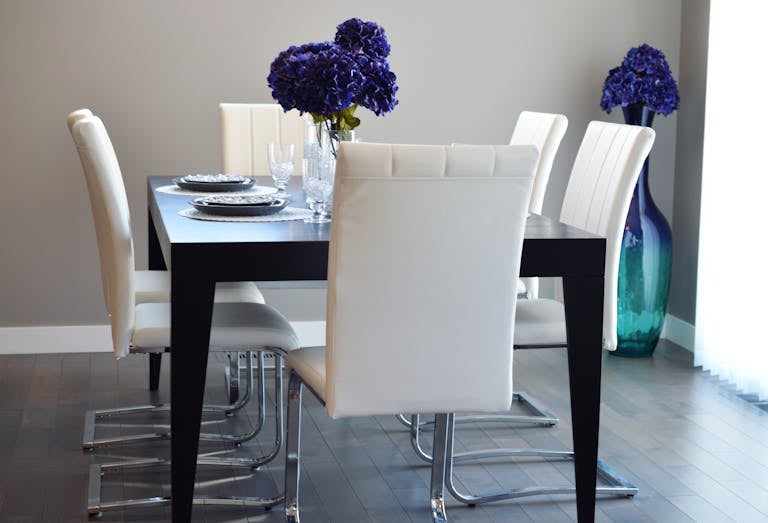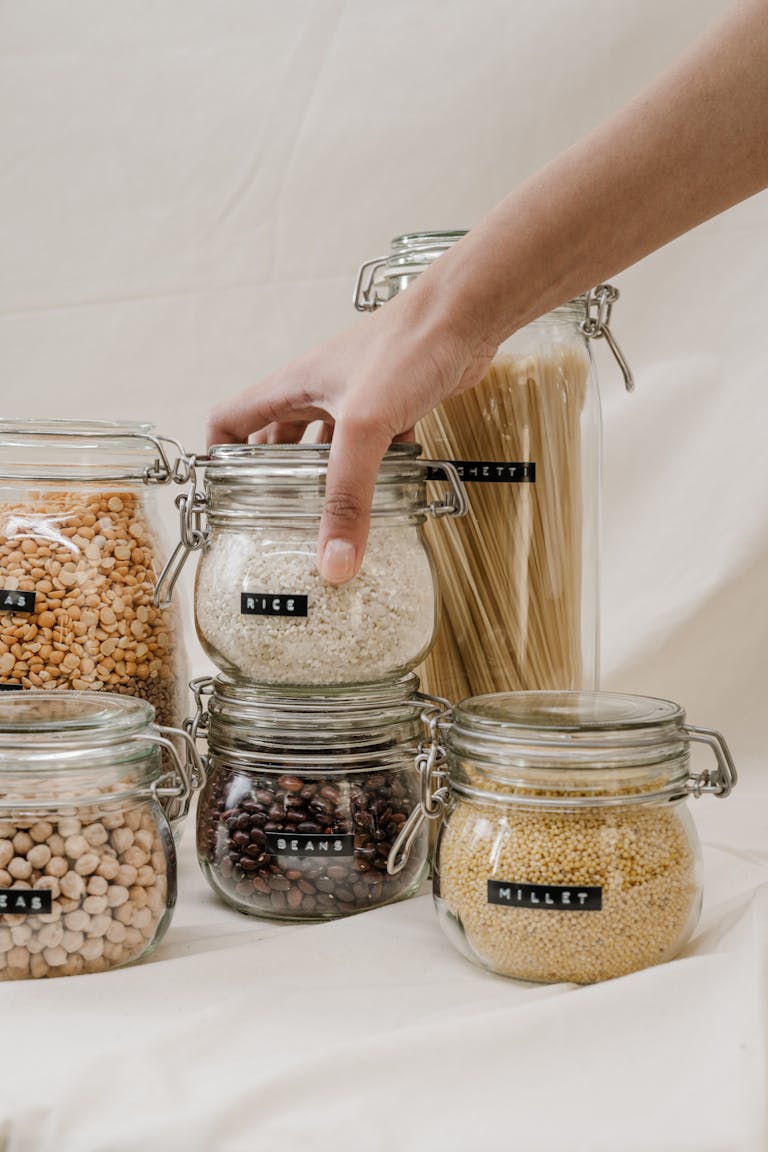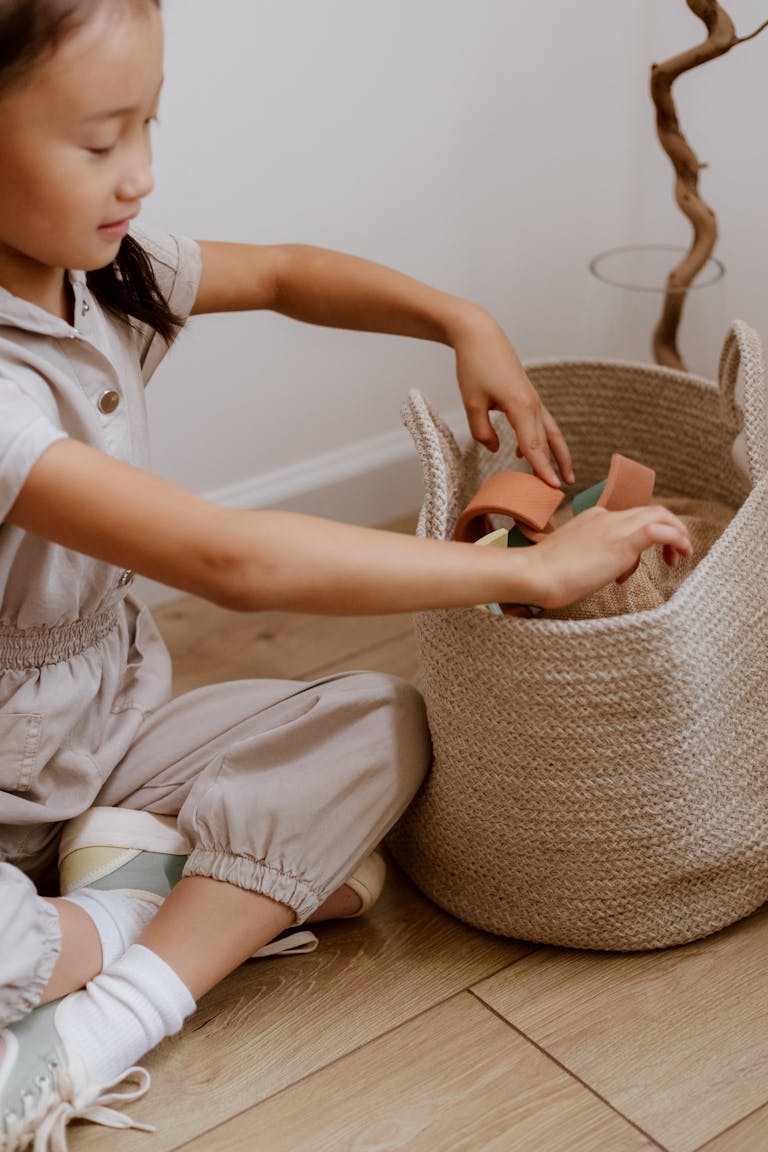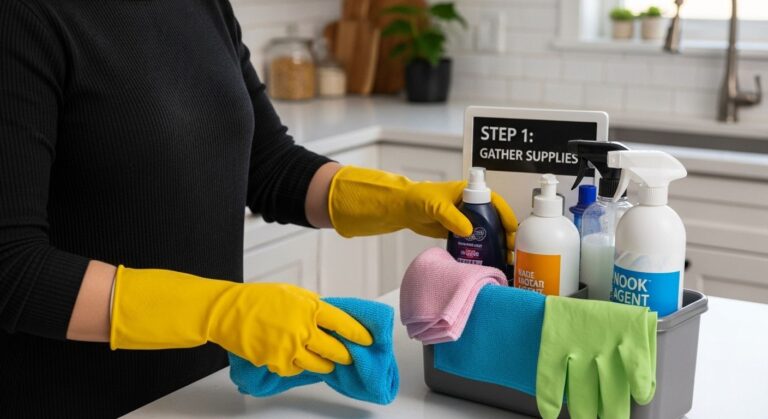Understanding the Advantages of Minimalism at Home
Minimalism sounds simple at first. Just own less and live lighter. Yet, studies show that people who embrace minimalism report noticeably lower stress levels and sharper focus compared to those surrounded by clutter. You might expect this is all about having fewer things, but the real transformation happens in your mind. The real surprise is that minimalism is less about empty shelves and more about freedom, clarity, and living with purpose.
Table of Contents
- What Is Minimalism And Its Core Principles?
- Why Minimalism Matters For Home And Well-Being
- The Psychological Benefits Of A Minimalist Lifestyle
- Practical Applications Of Minimalism In Daily Living
- Real-World Examples Of Minimalism At Home
Quick Summary
| Takeaway | Explanation |
|---|---|
| Minimalism promotes intentional living. | Prioritizing experiences and relationships over possessions enhances personal growth and mental clarity. |
| Declutter your environment for mental health. | Reducing physical clutter decreases anxiety, improves focus, and creates emotional space for clarity and peace. |
| Be mindful about your possessions. | Ask whether each item serves a purpose or brings joy, leading to a more satisfying living space. |
| Practice the “One In, One Out” rule. | Introduce new items only by removing others, maintaining balance and intentionality in your space. |
| Focus on multipurpose and quality items. | Opt for furniture and appliances that serve multiple functions to optimize your living environment. |
What is Minimalism and Its Core Principles?
Minimalism is more than just a design aesthetic or a trendy lifestyle choice. It’s a thoughtful approach to living that focuses on stripping away the unnecessary and keeping only what truly adds value to your life. Researchers have found that minimalism is fundamentally about intentionality and creating space for what matters most.
The Philosophy Behind Minimalism
At its core, minimalism is about making deliberate choices about what you allow into your physical and mental spaces. Think of it like cleaning out a cluttered closet, but applied to your entire life. You’re not just removing things randomly. You’re carefully selecting what stays based on its genuine usefulness and meaning.
The key principles of minimalism include:
- Intentionality: Choosing items and activities with purpose
- Simplicity: Reducing complexity in your environment and lifestyle
- Value-driven living: Prioritizing experiences and relationships over material possessions
Practical Applications at Home
In a home setting, minimalism isn’t about living in an empty white room. Instead, it’s about creating a space that supports your well-being and reflects your true priorities. Learn more about minimalist living to understand how this philosophy can transform your living environment.
Each item in your home should serve a purpose or bring you genuine joy.
This doesn’t mean getting rid of everything you own, but being mindful about what you choose to keep. A minimalist home feels calm, organized, and intentionally designed to support your daily life.
Here is a table outlining core minimalist principles alongside practical strategies for applying them at home.
| Minimalist Principle | Practical Home Application |
|---|---|
| Intentionality | Keep only items that serve a clear function or bring joy |
| Simplicity | Reduce complexity by minimizing furniture and decor |
| Value-driven Living | Prioritize meaningful experiences over material possessions |
| Regular Decluttering | Schedule quarterly reviews to remove unnecessary items |
| One In, One Out Rule | Remove one item for each new addition to stay balanced |
By embracing minimalism, you’re not just decluttering your space. You’re creating room for what truly matters personal growth, meaningful connections, and peace of mind.
Why Minimalism Matters for Home and Well-being
Research suggests that minimalism is far more than an aesthetic choice. It’s a powerful approach to improving mental health, reducing stress, and creating environments that support overall well-being. Your home is more than just a physical space it’s a sanctuary that directly impacts your emotional and psychological state.
Mental Health and Physical Spaces
The connection between your living environment and mental wellness is profound. Cluttered spaces can create constant low-level stress that drains your energy and reduces your ability to focus.
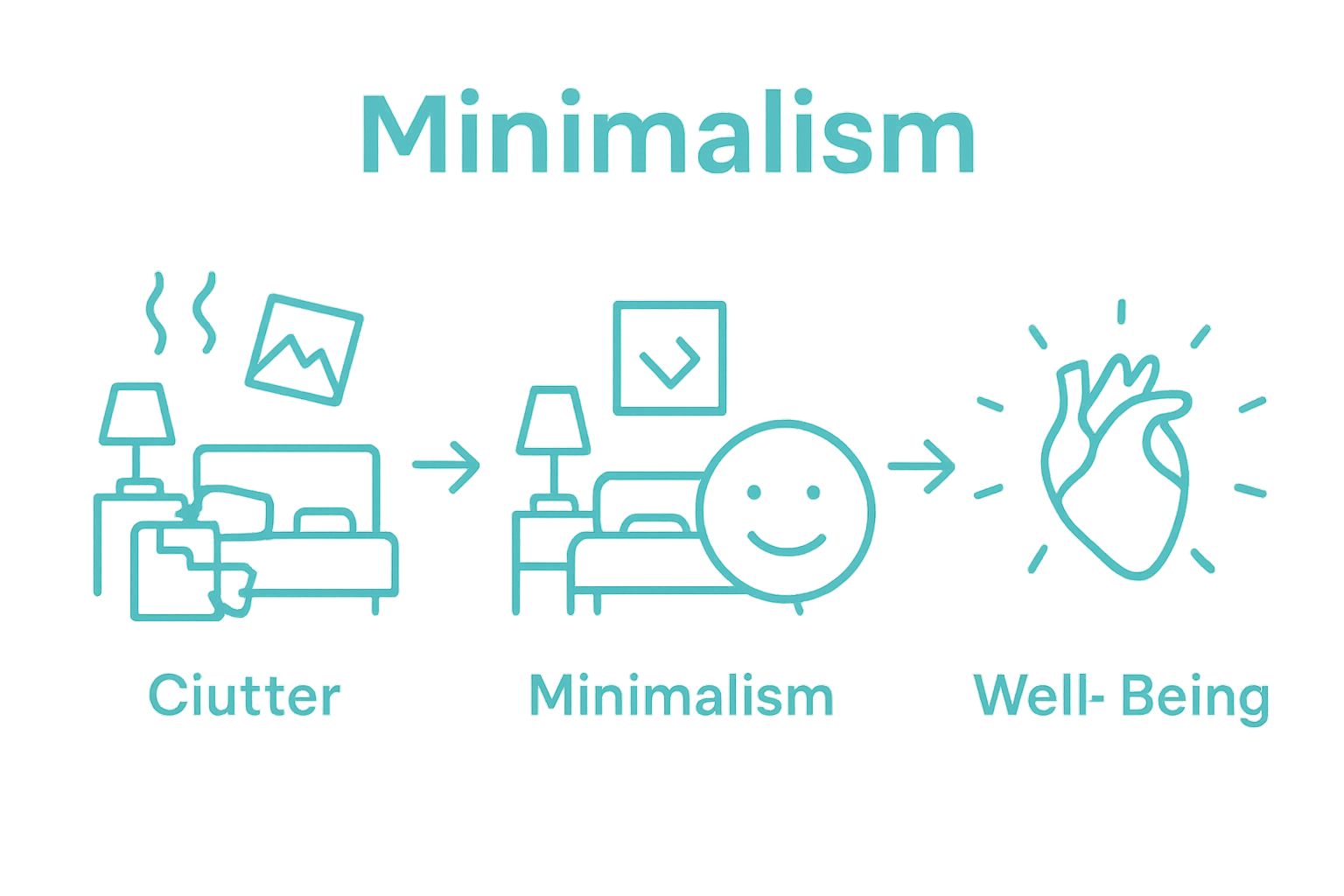 Imagine walking into a room where every surface is covered with items each one competing for your attention. That visual noise creates mental noise, making it difficult to relax and think clearly.
Imagine walking into a room where every surface is covered with items each one competing for your attention. That visual noise creates mental noise, making it difficult to relax and think clearly.
The table below summarizes key psychological benefits of minimalism and how they help enhance daily well-being.
| Psychological Benefit | Description |
|---|---|
| Reduced Anxiety | Living with fewer items reduces visual distractions and creates a calm, peaceful environment. |
| Improved Focus | Clean, organized spaces help your mind concentrate on important tasks. |
| Enhanced Emotional Clarity | Decluttering physical space often leads to improved emotional self-awareness. |
| Decreased Decision Fatigue | Fewer possessions mean fewer choices to make, preserving mental energy. |
| Increased Emotional Resilience | Less external chaos fosters greater internal stability and relaxation. |
Key psychological benefits of minimalist living include:
- Reduced Anxiety: Fewer items mean fewer visual distractions
- Improved Focus: Clean spaces help your mind feel more organized
- Enhanced Emotional Clarity: Physical decluttering often leads to mental decluttering
Creating Emotional Freedom
Minimalism is about making deliberate choices that create emotional space. When you remove physical clutter, you’re not just organizing things you’re creating room for personal growth, creativity, and genuine experiences. Our guide on minimalist living can help you understand how this approach transforms not just your home, but your entire life perspective.
By intentionally choosing what you allow into your personal space, you’re making a powerful statement about what truly matters. You’re saying no to external pressures and yes to your own well-being. This isn’t about living with nothing it’s about living with purpose and intention.
Ultimately, minimalism offers more than a clean home. It provides a pathway to greater peace, reduced stress, and a more meaningful connection with your living environment.
The Psychological Benefits of a Minimalist Lifestyle
Scientific studies reveal that minimalism isn’t just about having fewer possessions. It’s a transformative approach that can significantly improve mental health and emotional well-being. By consciously reducing physical and mental clutter, you create space for what truly matters in life.
Reducing Mental Overwhelm
Our brains are constantly processing information, and a cluttered environment adds unnecessary cognitive load. When your living space is filled with excess items, your mind subconsciously tries to manage and categorize everything. This constant background processing creates stress and reduces your ability to concentrate on important tasks.
Key cognitive benefits of minimalism include:
- Decreased Decision Fatigue: Fewer choices mean less mental energy spent on trivial decisions
- Enhanced Mental Clarity: A clean environment promotes clearer thinking
- Increased Emotional Resilience: Less external chaos supports internal peace
Emotional Freedom and Self-Discovery
Minimalism is a powerful tool for personal growth. When you strip away external distractions, you create room for self-reflection and understanding. Explore our minimalism resources to dive deeper into this transformative lifestyle.
By letting go of unnecessary possessions, you’re not just cleaning your space. You’re making a profound statement about your values and priorities. This process helps you understand what genuinely brings you joy and meaning, rather than being swept along by societal expectations or consumer culture.
Ultimately, minimalism is about intentional living. It’s a mindset that empowers you to focus on experiences, relationships, and personal growth instead of accumulating material possessions. The psychological benefits extend far beyond a tidy home they provide a pathway to a more authentic, peaceful, and fulfilling life.
Practical Applications of Minimalism in Daily Living
Minimalism isn’t about living with nothing it’s about living with intention and purpose. Researchers have observed that practical minimalism can dramatically improve daily life quality by helping you focus on what truly matters.
Simplifying Your Personal Spaces
Starting minimalism doesn’t mean throwing away everything you own. It’s about making thoughtful decisions about what you keep and why. Your living spaces should support your lifestyle, not complicate it. This means carefully evaluating each item and asking yourself: Does this serve a genuine purpose? Does it bring me joy or utility?
Key strategies for practical minimalism include:
- One In, One Out Rule: When you bring a new item home, remove something else
- Regular Decluttering: Schedule quarterly reviews of your possessions
- Intentional Purchasing: Buy items that are high quality and multipurpose
Minimalism Beyond Physical Possessions
True minimalism extends far beyond your physical environment. It’s about creating space in your schedule, relationships, and mental landscape. Check out our minimalist lifestyle tips to understand how you can apply minimalist principles across different life domains.
This might mean learning to say no to commitments that don’t align with your core values, reducing digital distractions, or being more selective about the media you consume. Minimalism is about quality over quantity in every aspect of life.
By embracing minimalist principles, you’re not restricting yourself. You’re deliberately creating room for growth, creativity, and meaningful experiences. It’s a powerful approach to living that transforms not just your physical space, but your entire approach to life.
Real-World Examples of Minimalism at Home
Contemporary research demonstrates that minimalism manifests differently for everyone, with practical applications that adapt to individual lifestyles and living spaces. Understanding real-world scenarios can help you visualize how minimalist principles might work in your own home.
Minimalist Living Spaces
Minimalism isn’t about having empty rooms. It’s about creating functional, intentional environments that support your daily life. Imagine a living room with carefully selected furniture that serves multiple purposes. A sleek sofa with hidden storage, a coffee table that transforms into a workspace, or modular shelving that adapts to changing needs.
Key characteristics of minimalist home design include:
- Multipurpose Furniture: Items that serve more than one function
- Neutral Color Palettes: Calm, consistent color schemes
- Thoughtful Storage Solutions: Hidden storage that maintains clean lines
Kitchen and Personal Spaces
In the kitchen, minimalism means having tools and appliances that you genuinely use. Discover how to streamline your kitchen by keeping only essential, high-quality items. This might mean a single excellent chef’s knife instead of a drawer full of rarely used utensils, or choosing cookware that can handle multiple cooking techniques.
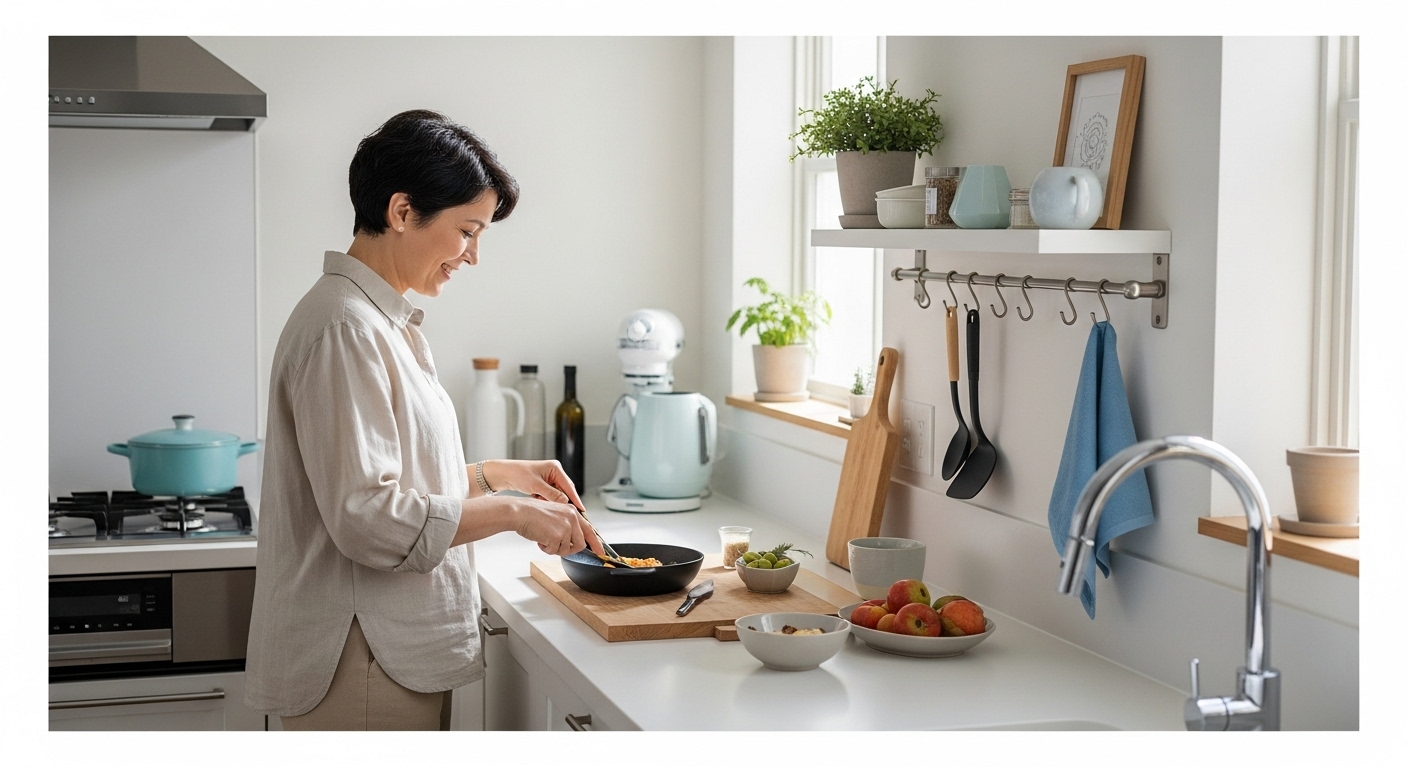
Personal spaces like bedrooms and home offices benefit from minimalist approaches too. A bedroom with a comfortable bed, essential clothing, and minimal decorative elements can create a peaceful sanctuary. A home office with a clean desk, ergonomic chair, and only the technology you need can boost productivity and reduce visual clutter.
Minimalism is ultimately about creating spaces that breathe, support your lifestyle, and reflect your most authentic self. It’s not about deprivation, but about intentional abundance.
Take the Next Step Toward a Calm and Clutter-Free Home
If the challenges of mental overwhelm, constant clutter, and decision fatigue feel all too familiar, you are not alone. The article highlighted how minimalism brings clarity, peace, and more meaningful living by helping you shed what no longer serves you. But starting a minimalist journey can seem daunting when you are trying to balance the demands of daily life and the emotional weight of letting go.
Here is your opportunity to make lasting changes right now. Visit our Minimalism Archives for actionable tips and real stories that show how to bring simplicity into every area of your home. If you are looking for general advice on decluttering or organization, explore our Decluttering Archives to find the support you need at each step. You deserve a living space that brings you calm and joy each day. Start your transformation today by browsing our expert resources and discover how easy it is to reclaim peace from chaos.
Frequently Asked Questions
What are the main benefits of minimalism at home?
Minimalism at home promotes reduced stress, improved focus, and a more organized living environment. By eliminating clutter, you create space for what truly matters in your life, leading to greater peace and mental clarity.
How can I start practicing minimalism in my home?
You can start by evaluating your possessions and determining which items are essential or bring you joy. Implement strategies like the ‘One In, One Out’ rule to manage new items and schedule regular decluttering sessions to maintain a minimalist space.
Is minimalism only about getting rid of physical items?
No, minimalism extends beyond physical possessions. It’s also about simplifying your schedule, prioritizing relationships, and reducing digital distractions to create a more intentional and fulfilling life.
How does minimalism impact mental health?
Minimalism can greatly enhance mental health by reducing anxiety and decision fatigue. A decluttered environment can lessen cognitive load, leading to improved focus and emotional resilience.
Recommended
- Minimalism Archives | Simple Neat Home
- Understanding the Benefits of Minimalist Living | Simple Neat Home
- What is Minimalist Living? Understand Its Essence | Simple Neat Home
- Living Archives | Simple Neat Home
